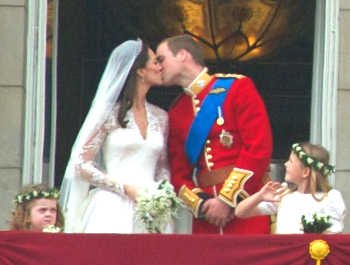
June 18, 2013, by Harry Cocks
The Cost of Marriage
How much money do you need to get married these days? According to The Guardian (7/8/2010) the wedding day alone is said to cost the average British couple £21,000 (up from £12,000 in 2003) and tales circulate of newlyweds hawking their wedding presents on ebay in order to recoup marital expenses. And that is without even considering the cost of setting up home, which can plunge couples into debt before their marriage has even begun. It is not a surprise to find that this dilemma has been around for some time, and questions of the correct “bride price” or dowry date back into antiquity. However, as these older methods of organising marriage and transferring wealth died out with the rise of modernity, the question of whether you had enough money to get married became a particular obsession for those who might not necessarily have the wherewithal to do so. This was particularly true for the late-Victorian and Edwardian middle class in Britain, one of whose perennial worries was the price of marriage, and whose anxieties were summed up by the titles of mid-nineteenth century best sellers like Eliza Warren’s guide for the hard-pressed middle class wife, How I Managed My House on Two Hundred a Year (1864). Further down the social scale, among the white-collar workers who made up the new lower-middle class, the problem was even more acute. How could you estimate the true cost of a respectable marriage and home? In a recent article for Social History, Dr Harry Cocks, Associate Professor of History at Nottingham, shows that one way of doing this was through the columns of matrimonial newspapers. These papers boomed in the late-Victorian period, and by 1914 there were at least twenty-two such titles containing little other than ads from those looking for husbands or wives. Some claimed credit for making at least twenty marriages a week and over a thousand a year. These papers and their related agencies catered mainly for the lower-middle class and the higher ranks of tradesmen and domestic servants, who ranged from the practically-minded woman (“Domestic Servant, 21, thoroughly respectable, two years in good situation earning £14 per annum but no other money…seeks steady young man able to keep a wife”), to the aspiring (“Domestic, aged 26, with £250 in cash seeks man of same age with same amount of money”), the downright speculative (“Young Gentleman by birth, anxious to marry somebody with a regular income”) and the honest but unappealing (“Young Gentleman, lost all his money through racing”). The advantage for the historian is that matrimonial papers always stipulated that the advertiser must state their income. Although such figures were probably inflated in many cases, these ads do allow us to reconstruct the prevailing assumptions about how much money you needed to establish a respectable home (somewhere around £300 in the 1880s and 1890s). In that respect, the ads represent two things that are still with us today: a way of quantifying class, respectability and personal relations more generally, and a view of marriage as a form of negotiable contract. As the protagonist of Charlotte Morland’s 1888 farce The Matrimonial Agent said, on being admonished for patronising a marriage bureau and thereby mixing commerce with sentiment: “Feelings! They are as much on sale as bonnets at a milliner’s shop.”
“The Cost of Marriage and the Matrimonial Agency,” Social History 38, 1, pp. 66-88. http://www.tandfonline.com/doi/full/10.1080/03071022.2012.759774#.UcA38ec3vTo
No comments yet, fill out a comment to be the first

Leave a Reply